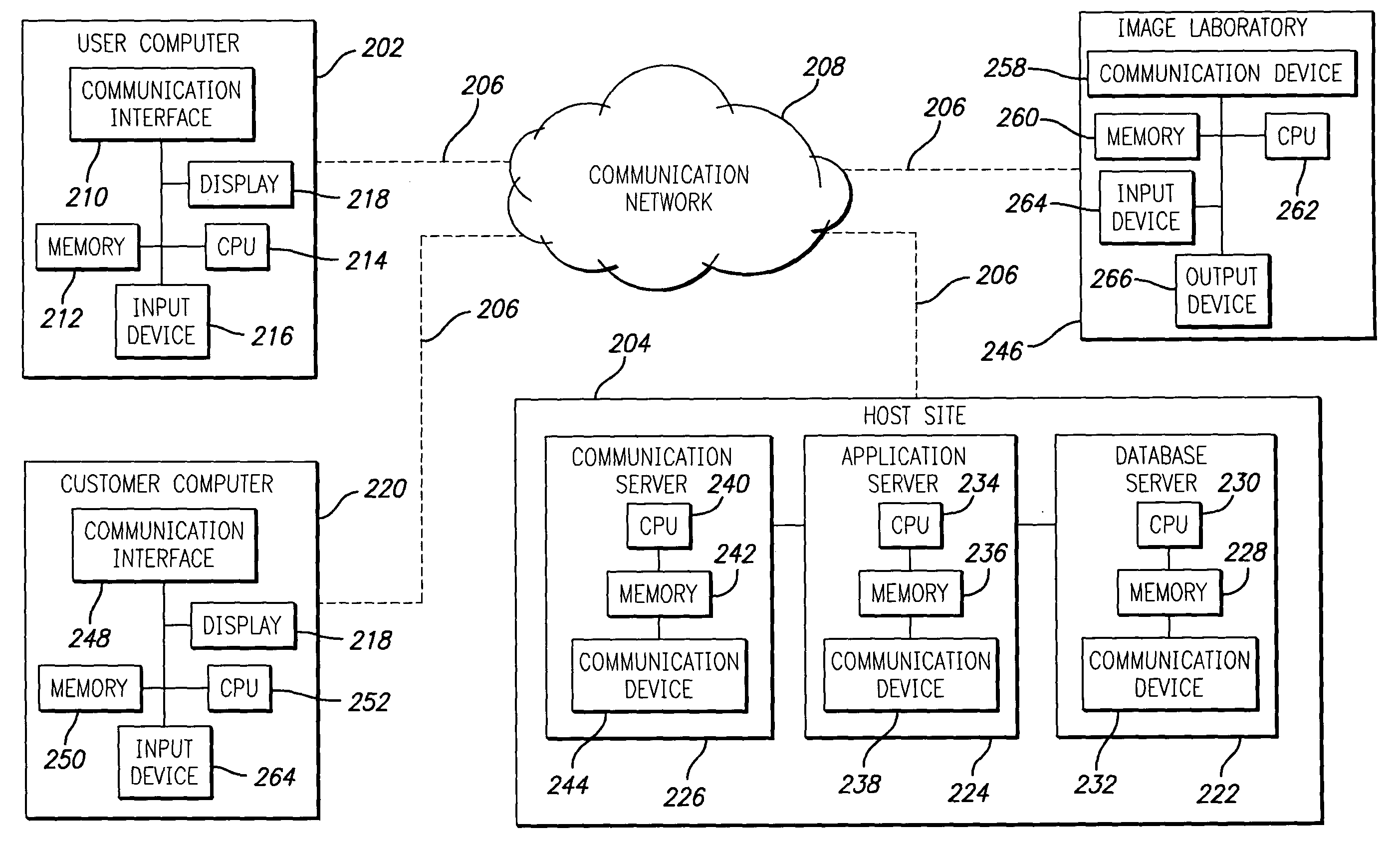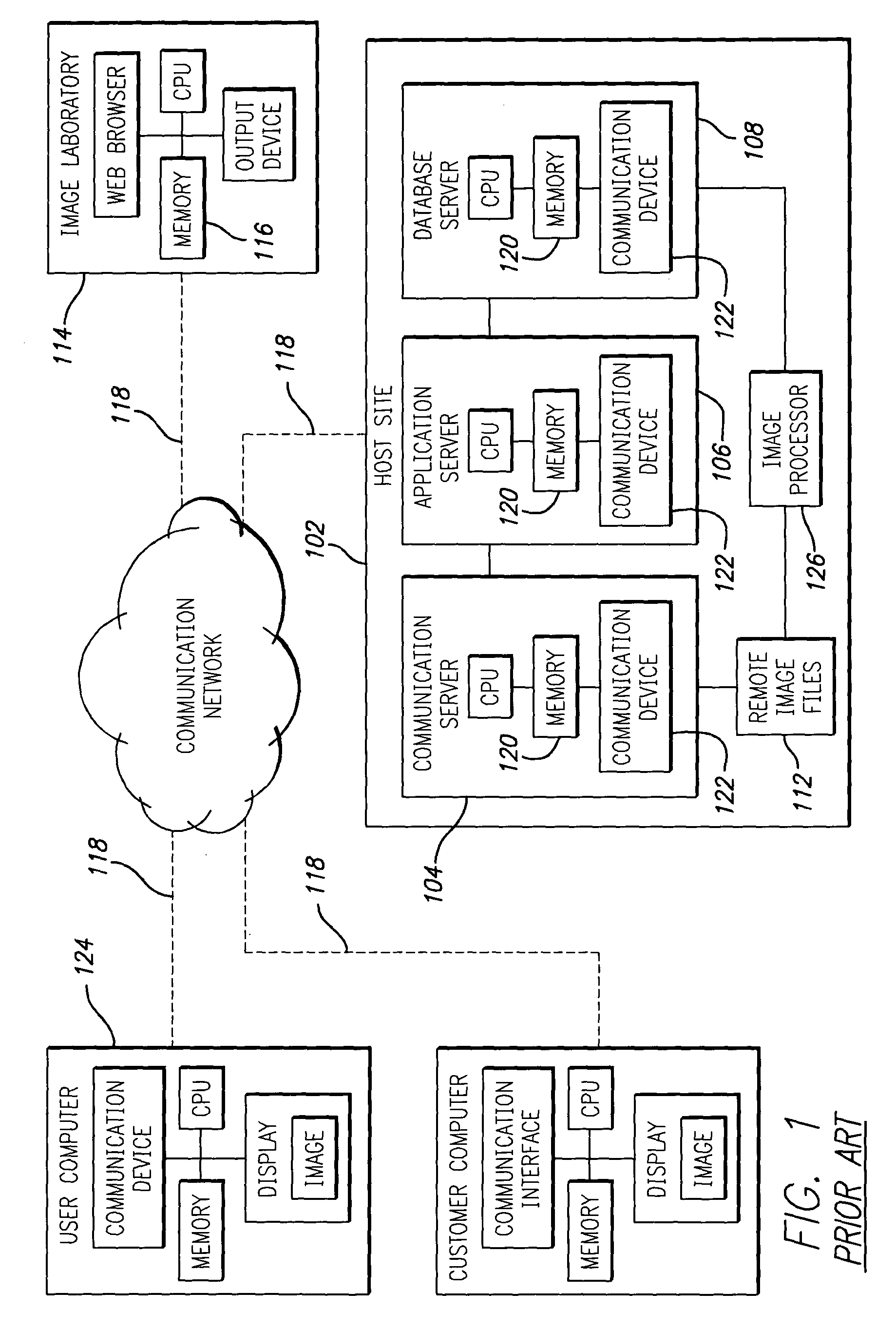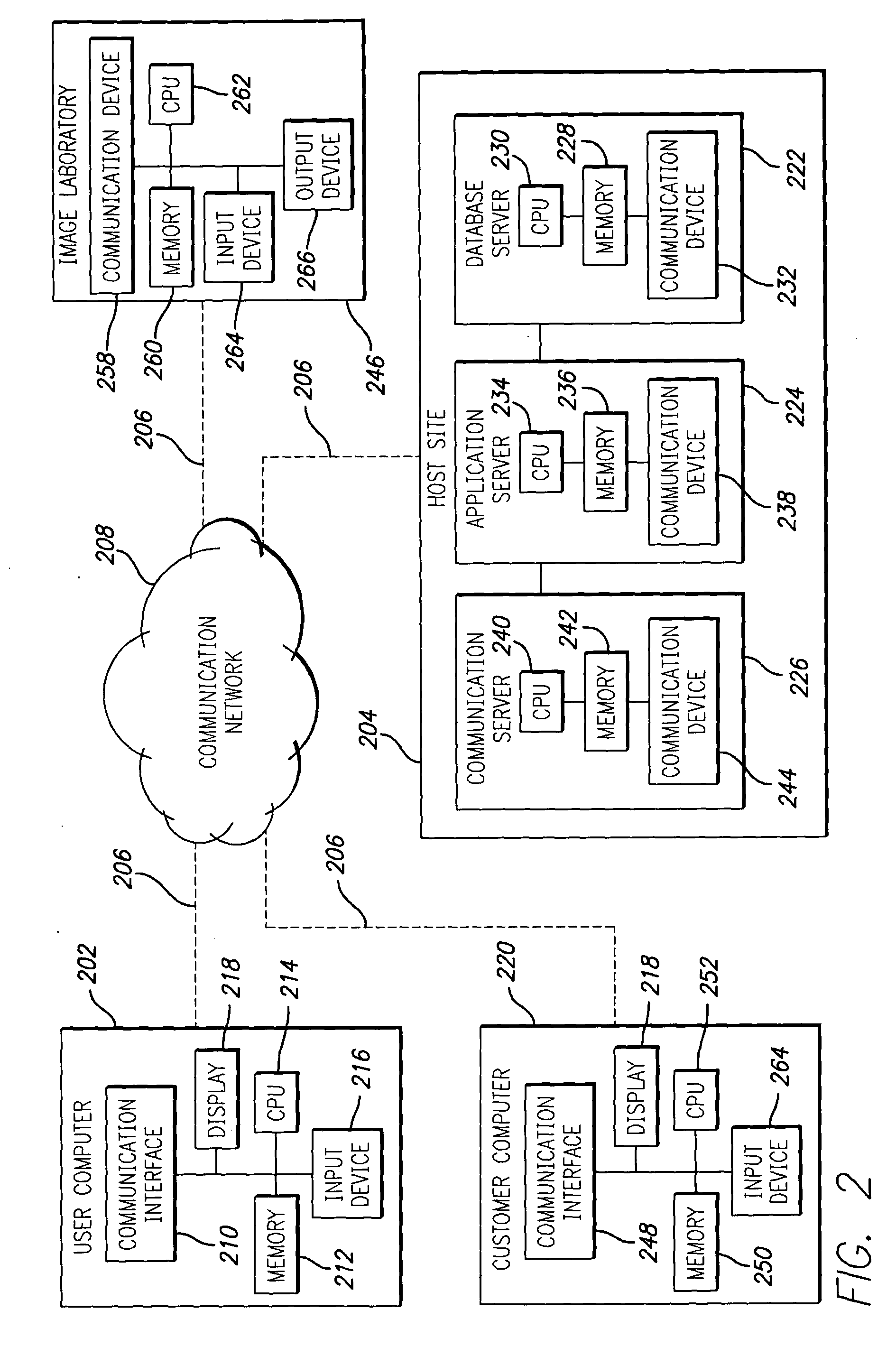Method and system for distributed image processing and storage
a distributed image and storage technology, applied in the field of distributed image processing and storage, can solve the problems of insufficient utilization of storage, bandwidth and processing resources of the user computer, and the prior art system imposing an undue burden on photographers to upload images, so as to achieve the preservation of significant bandwidth and storage resources of the host site, and the substantial reduction of processing resources required by the host si
- Summary
- Abstract
- Description
- Claims
- Application Information
AI Technical Summary
Benefits of technology
Problems solved by technology
Method used
Image
Examples
Embodiment Construction
[0025] The present invention is directed towards a method and system for distributed image processing and storage. In particular, the present invention is directed to a system and method that include a user, such as a photographer, who uploads processed image data pertaining to a plurality of images to a host site. Potential customers may view the plurality of images at the host site and may desire to order and pay for a subset of the uploaded images.
[0026] Pursuant to a first aspect of the invention, a user, such as a photographer, may automatically process digital images at the user computer and automatically upload the images to a host site. When the images are uploaded to the host site, the images are immediately accessible to customers who desire to view and purchase the uploaded images. By allowing users to process the images at the user computer, instead of at the host site, processing resources required by the host site are substantially reduced and otherwise unused resourc...
PUM
 Login to View More
Login to View More Abstract
Description
Claims
Application Information
 Login to View More
Login to View More - R&D
- Intellectual Property
- Life Sciences
- Materials
- Tech Scout
- Unparalleled Data Quality
- Higher Quality Content
- 60% Fewer Hallucinations
Browse by: Latest US Patents, China's latest patents, Technical Efficacy Thesaurus, Application Domain, Technology Topic, Popular Technical Reports.
© 2025 PatSnap. All rights reserved.Legal|Privacy policy|Modern Slavery Act Transparency Statement|Sitemap|About US| Contact US: help@patsnap.com



